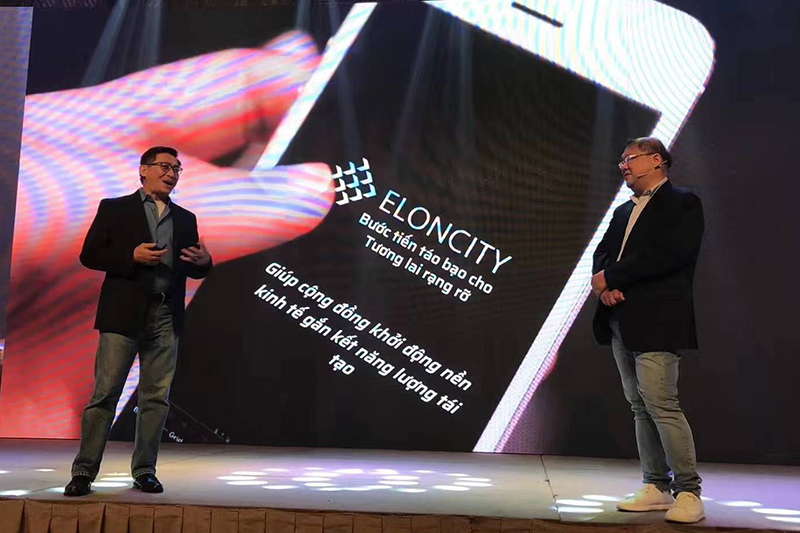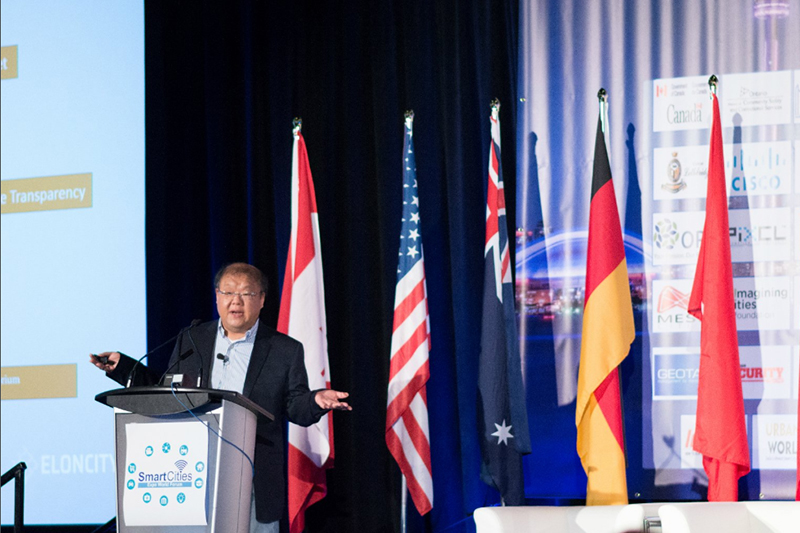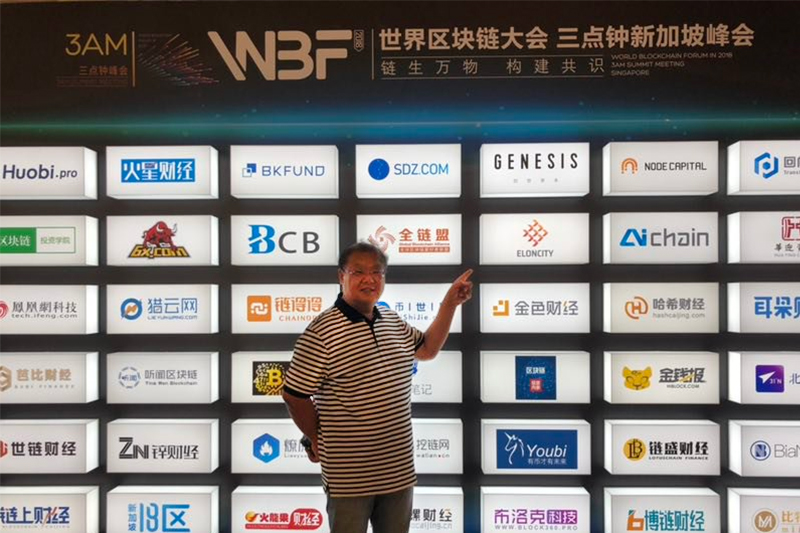ELONCITY is rewriting the relationship between people and energy, ushering in a new era that could dramatically lower emissions and shift energy ownership away from power stations into the hands of the community.
In early 2017, residents in San Juanico, a fishing community located on the west coast of Mexico’s Baja California Peninsula, welcomed their very own microgrid. A localised network of electricity production complete with storage system, it’s power delivered via their rooftops – specifically, through a PV system made up of dozens of solar panels that generate clean power from the sun. That energy churned out during sunlight hours is now stored in an intelligently networked battery energy storage system (BESS) installed in each premises, meaning it can either be used immediately to power electronic appliances or saved for later. Any energy surplus can be shared or sold to other community members through DCBus, a private network that manages electricity flow in the community, and a blockchain-powered virtual trading platform.

Underlying this new energy infrastructure is blockchain project ELONCITY. “It is a model for planning, constructing and operating community-based renewable microgrids that allow members of an ELONCITY community collaborate to exchange and share their locally produced renewable energy to fulfil most, if not all, of the community energy need,” the initiative’s founder Andy Li begins. Named after renowned tech entrepreneur and innovator Elon Musk, ELONCITY carries the same ambition – to accelerate the world’s transition towards a low carbon, sustainable and equitable energy future. “We want to unleash the community renewable microgrid potential to attain universal access to safe, reliable, affordable, sustainable and equitable electricity services,” he explains.
Energy management has been a highly centralised industry for decades. “Our modern way of life depends on power plants and large electric grids that power everything from light bulbs to mass transit subways. While these grids are amongst the most complex engineering systems ever constructed by humanity, their design is starting to age,” says Andy. These top-down power structures are particularly vulnerable to climate change catastrophes. When super typhoon Mangkhut battered Hong Kong and Macau three months ago, over 20,000 households faced power outages. Electricity grids all over the world have faltered under relentless demand for electric power during heat waves and other extreme weather events. “Centralised power grids now face significant challenges in providing safe, reliable, secure and affordable energy services.”

“And, although a centralised power supply has achieved a large-scale popularisation of electricity, it has the disadvantages of high costs and high losses,” Andy pinpoints. “Due to existing technical defects, the process of power transmission and distribution costs an exorbitant amount of money, and transmission losses are expected.” Aside from all that, the installation, maintenance, and operation of power infrastructure also involve significant economic and environmental cost – costs that are ultimately passed on to end users.
By contrast, a distributed or decentralised clean energy supply network such as ELONCITY’s bottom-up grid architecture proposes to slash the cost of electricity by eliminating the need for the middlemen. The direct current power supply can also radically reduce energy loss and waste from transmission and distribution. Microgrids’ independence from central electric utilities also improves electric reliability and empowers communities to sustain their own energy needs – even during broad power failures.

“At present, the acquisition cost of renewable energy is getting lower,” Andy points out. According to a study conducted by Oxford University researchers in 2016, solar panels have become 10% cheaper each year since the 1980s. The study predicts this trend is likely to continue, putting solar energy on course to meet 20% of global energy needs by 2027. Which means, “as energy storage technologies become more mature and the price of energy storage equipment continues to fall, clean power microgrids will be more economically compelling in foreseeable future.”
The brains behind ELONCITY are aware that, currently, sole reliance on renewable energy has its shortcomings. “The most critical issue hampering the transition to a sustainable energy economy is the limitation of energy production time, a variable that is unalterable. Most renewable sources cannot produce energy 24 hours a day. Solar energy produces electricity 2 to 3 hours before and after noon, and wind usually blows late at night or early in the morning when everybody is asleep. Therefore, balancing the supply of renewable energy with consumer demand for electricity is our most pressing problem,” Andy explains.
He proposes that the answer to this problem lies in blockchain technology. Formerly a chief engineer at leading information technology company Cisco and cloud computing giant Alibaba, Andy hopes to harness blockchain, the distributed ledger technology that underlies cryptocurrencies such as Bitcoin, to eliminate these limitations and catalyse the global adoption of distributed energy grids. “Our blockchain platform provides an open, but secure and immutable ledger for energy exchanges and the allocation of cost-benefits of shared energy resources in the community,” he says.

ELONCITY’s blockchain energy trading platform enables energy exchanges among premises in its ELONCITY communities, maximising the utilisation rate of energy generated and stored in the system, all whilst balancing the electricity supply and demand, even during unfavourable weather conditions. It differs from the traditional pricing mechanisms in the energy industry, where prices of electricity are determined by market oligarchs. Instead, ELONCITY’s trading platform will recommend an equitable trading price within the network in real-time through an AI algorithm and IoT technologies, making energy prices transparent to all end users.
With blockchain technology as its backbone, ELONCITY also has the ability to establish auditable records so end users can track their sources of electricity and ensure that they are generated from renewable sources. This is an intrinsic part of ELONCITY’s reward program PoSp, which is designed to incentivise users to harvest stored renewable energy and sell energy during peak hours. Users will be rewarded for their contributions to the community in the form of the platform tokens ECT (a token is used to represent any tradable assets, e.g., electricity in this case) based on how actively they mine the stored electricity. One token contains 32-gigawatt hours of stored electricity, which is enough to power 1 million homes for an entire day. Andy says the scheme will encourage people to invest in the energy storage system. In addition to offering their services in San Juanico, they are now working to expand their program to a community of 480 homes in Brawley, California. They’ve also been invited to introduce the model in a new town of 27,000 planned homes in Ontario, Canada.
ELONCITY is still in its development stage, but its implications could be far-reaching. Essentially, the project wants to rewrite the relationship between people and energy, ushering in a new era that could dramatically lower emissions and decentralise the power behind energy. At its core is a dream to democratise the whole process, making renewable agents our primary sources. “I’m excited to be part of this future where everything is powered by clean electricity, where the cost of electricity is negligible, where nobody can exploit the energy market. With ELONCITY, we will produce clean energy, 24/7, for one another.”





